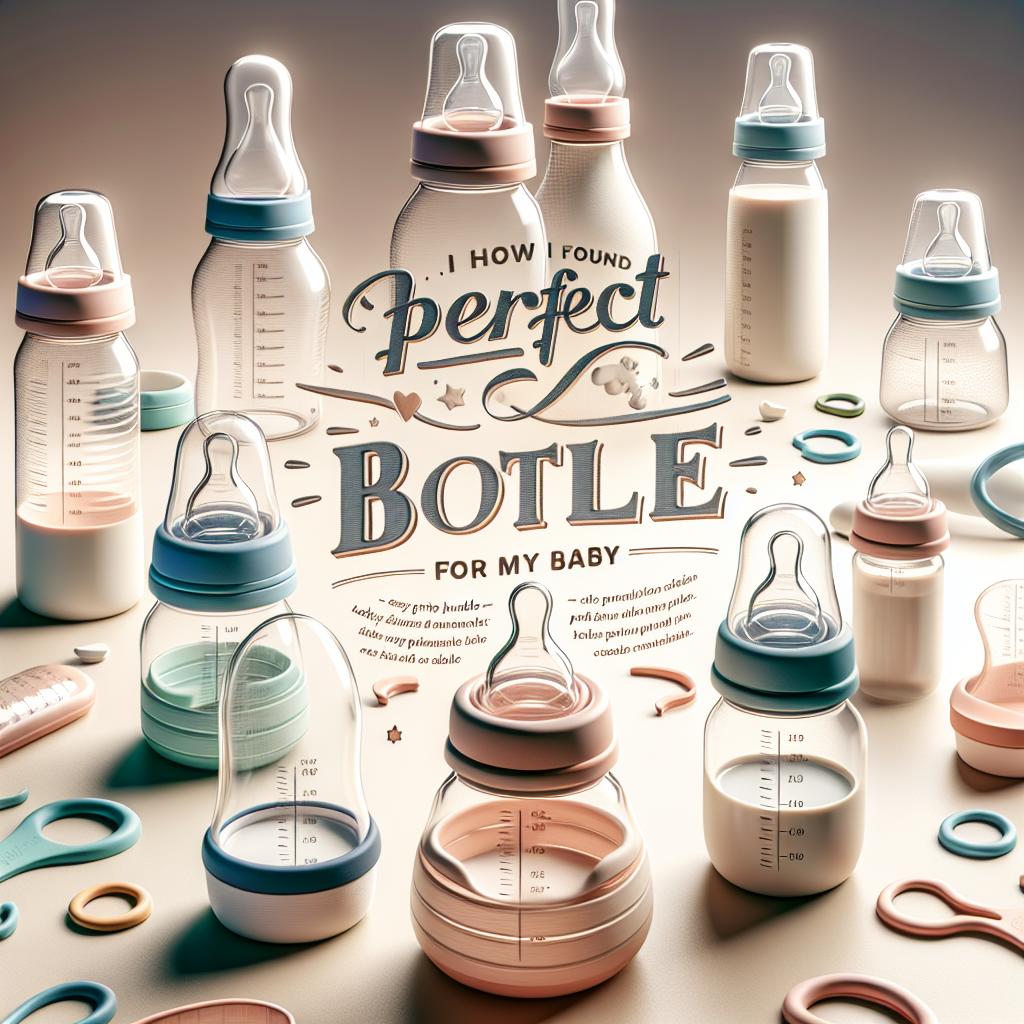Understanding the Unique Feeding Needs of Preemies
The moment you hold your newborn in your arms is magical. But if your baby is born prematurely, this experience might also come with unique challenges, including feeding. Preemies, babies born before the 37th week of pregnancy, often require specialized care to ensure they’re getting the necessary nutrients for their growth and development. One crucial aspect of their care is selecting the right baby bottles for preemies.
Babies Born Prematurely and Nutritional Needs
Feeding premature babies are a little different than feeding full-term babies. Preemies may not be able to breastfeed immediately due to their immature digestive system and difficulty coordinating sucking, swallowing, and breathing. That’s where baby bottles designed specifically for preemies come in.
- Slow Flow Nipples: Preemie bottles usually feature slower-flow nipples, which reduce the risk of choking and overfeeding.
- Smaller Size: They are also smaller in size, perfect for the small amount of milk that preemies can digest at a time.
- Special Vent System: These bottles often include a special vent system to help reduce air intake, reducing the chances of gas and colic.
Make sure to consult with your neonatal care team or pediatric nutritionist for specific feeding recommendations and NICU feeding tips to ensure your baby is getting the right amount of nutrients.
High-Quality Baby Bottles for Preemies
When it comes to feeding your preemie, it’s essential that you choose a baby bottle that meets their unique needs. Consider the following recommendations:
- Dr. Brown’s Anti-Colic Options+ Preemie Baby Bottle: This bottle features a specially designed vent system that reduces air intake, decreasing the risk of colic and gas.
- Medela SpecialNeeds Feeder: Specially designed for babies with oral and facial abnormalities, this feeder also helps babies who merely need extra feeding support.
- NUK Simply Natural Baby Bottle: With a nipple closely resembling the shape of a mother’s nursing nipple, this bottle is another excellent option for preemies.
Make sure you consult your healthcare professional before making any decision. You can find a range of suitable options on Target.
Proper Cleaning and Sterilization of Baby Bottles
Keeping the baby bottles clean is just as crucial as choosing the correct bottle for your preemie. Remember, a baby’s immune system is still developing, and preemies are especially vulnerable to infections.
Here are some general cleaning and sterilization tips:
- Rinse the bottle as soon as you finish feeding your baby to prevent milk residue.
- Use a bottle brush for thorough cleaning, ensuring that you reach the bottom and all corners of the bottle.
- Sterilize the bottles before each use in the early weeks and months. You can sterilize using a sterilizing solution, boiling water, or a bottle sterilizer.
- Always store sterilized, assembled bottles in a clean, dry place.
Choosing the right baby bottle for preemies and maintaining it properly are vital steps in feeding premature babies which you can learn more about in our in-depth article Upcoming Trends in Baby Bottles: What’s Next?.
How to Choose Baby Bottles for Preemies: A Careful Selection
Selecting Preemie Nipples That Mimic Breastfeeding
To help premature babies transition to breastfeeding, it’s important to choose the right baby bottle nipple for your preemie. Ideally, it should mimic the mother’s breast to facilitate easier switching between breast and bottle feedings. The same sucking motion that babies use during breastfeeding helps them ingest feed from the bottle.
Some brands offer preemie nipples, which are softer, wider, and have a natural shape to encourage the baby’s latch. The flow rate is also critical; a slower flow can better mimic a breastfeeding experience, allowing the preemie to control the pace of the feed and reduce the risk of overfeeding.
What To Look for When Choosing Baby Bottles for Preemies
When selecting the right baby bottle for your preemie, consider the following elements:
- Nipple Shape and Size: Opt for a wide, soft nipple to mimic the natural breastfeeding experience.
- Flow Rate: A slower flow rate will reduce the chances of overfeeding and allow your baby to control feed intake.
- Ventilation System: A well-designed vent system minimizes swallowed air, reducing the discomfort of gas and colic.
- Material: Opt for bottles made from BPA-free plastic, glass, silicone, or stainless steel. Each of these has its pros and cons, so choose one that you feel comfortable with.
- Easy to Clean: Complicated bottle designs with lots of parts may be difficult to clean. Choose a design that is easy to disassemble and clean thoroughly.
Additional NICU Parent Tips for Feeding Preemies
As a parent in the NICU, you play a pivotal role in your preemie’s feeding process. The NICU Parent community may be a great resource for additional feeding tips, including:
- Understanding your baby’s feeding cues: Signs such as sucking on their hands or searching for the nipple indicate they are ready to feed.
- Practicing Kangaroo Care: Skin-to-skin contact can help regulate the baby’s body temperature, heart rate, and breathing, also promoting the mother’s milk production.
- Pacing the feeding: Allow your baby to pause between swallows. This can prevent overfeeding and help your baby feel more comfortable.
- Keeping track: Monitor your baby’s feeding amounts and frequency. This can be helpful information for your healthcare professionals.
The Right Bottle Can Make a Difference
Parenthood involves making countless decisions, many of which can feel overwhelming, especially when your baby arrives sooner than expected. Remember that each baby is unique and what works for one may not work for another. A bottle that suits one baby may not necessarily suit another.
Opt for high-quality baby bottles specifically designed for preemies to help them transition to breastfeeding and promote their growth. In the end, the best choice is the one that keeps your baby fed and content.
For detailed information on the nutritional needs of preemies, refer to this extensive feeding guide provided by Brigham and Women’s Hospital. With the right tools and guidance, you can ensure your baby receives the necessary care to grow strong and healthy.






